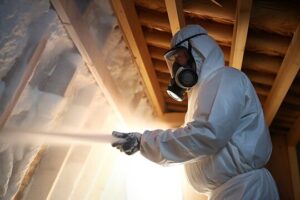When it comes to building or renovating a home, insulation is one of the most important investments you can make. While it’s often hidden behind walls or under floors, the quality of insulation directly impacts energy efficiency, comfort, and long-term savings. For home renovators and new builders, choosing the right insulation isn’t just about meeting code requirements—it’s about creating a high-performance home that feels comfortable year-round while keeping costs under control.
Why Insulation Matters in Remodeling Projects
If you’re renovating an older home, chances are the insulation is outdated, inefficient, or in some cases, completely missing. This can result in:
-
High energy bills due to heat escaping in winter and cool air leaking in summer.
-
Uneven temperatures throughout the house, leading to drafty or uncomfortable rooms.
-
Moisture issues that may cause mold growth or structural damage over time.
By upgrading insulation during a remodel, you not only enhance the comfort and efficiency of the home but also increase its resale value. Modern buyers are looking for energy-efficient properties, and improved insulation is a strong selling point.
Insulation for New Construction
Builders today face growing demand for homes that balance affordability with sustainability. Modern insulation solutions help meet that need by:
-
Improving energy efficiency to meet or exceed building codes.
-
Reducing long-term costs for homeowners through lower heating and cooling bills.
-
Supporting sustainability goals with eco-friendly options like spray foam, cellulose, or recycled materials.
For new builds, choosing the right insulation upfront can prevent costly retrofits later. It’s an opportunity to get it right the first time.
High-Performance, Cost-Effective Options
There are several insulation materials that are popular among renovators and builders:
-
Spray Foam Insulation – Offers excellent air sealing, high R-values, and durability. Ideal for hard-to-reach areas.
-
Fiberglass Batts – A cost-effective and widely available option, great for large wall and ceiling cavities.
-
Blown-In Cellulose – Eco-friendly, made from recycled materials, and provides good coverage in attics and walls.
-
Rigid Foam Boards – Perfect for foundations, basements, and areas that need moisture resistance.
Each option has unique benefits, and the right choice often depends on the project’s budget, design, and performance goals.
Long-Term Benefits for Homeowners
Investing in high-quality insulation during a remodel or new build pays off in several ways:
-
Consistent comfort in every season.
-
Lower utility costs month after month.
-
Reduced strain on HVAC systems, extending their lifespan.
-
Increased home value thanks to energy efficiency features.
Conclusion
For home renovators and new builders, insulation isn’t just a behind-the-scenes upgrade—it’s a foundation for comfort, efficiency, and value. Whether you’re modernizing an older home or constructing a brand-new one, choosing the right insulation ensures the home performs well for years to come.
If you’re planning a renovation or new build, now is the time to explore your insulation options. A smart investment today creates a more sustainable, comfortable, and cost-efficient home tomorrow.





